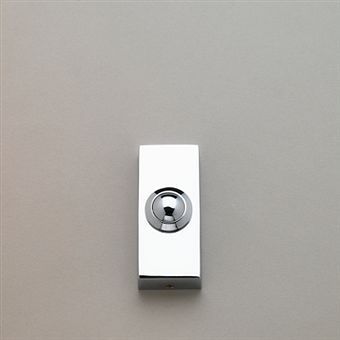
A doorbell is a necessary installation for any house. For many years now, wired doorbells have been standard installations. That trend is slowly changing as the wireless electronics revolution has changed the way doorbells are made too. Wireless doorbells are fast replacing conventional wired doorbells, due to their comparatively easy installation and ease of use. In an increasingly unplugged world, as we do away with wired connections and increasingly rely on wireless communication, it is but natural that even doorbells go wireless.
To fully understand the working of a wireless doorbell, I will have to take a brief detour to explain the fundamentals of wireless communication. Modern cell phones, Wi-Fi networks and Dish TV antennas, along with countless other devices use modulated radio signals as the communication medium. Every wireless communication based system is made up of a dual combination of a transmitter and a receiver.
Radio signals are modulated electromagnetic carrier waves, on which a signal is superimposed for transmission. On reception of the signal, the receiver, which is tuned to the frequency of the carrier wave, decodes and demodulates the signal to its original form. This is how wireless transmission works. Let us now see how this principle of radio communication works in wireless doorbells.
About Wireless Doorbells
A standard wireless doorbell set is made up of two parts, which includes the doorbell apparatus and a chime box receiver. Many devices will come with double receivers which can be placed in two separate locations in the house. The doorbell is obviously installed beside the door and screwed or taped to the wall. The receivers, with built in multiple tone chime boxes can be placed anywhere inside the house, within the range of 150 to 200 meters from the doorbell.
The doorbell is powered by an internally fitted battery, which eliminates the need of a power connection. A standard set may cost anywhere between $9 to more than $35. The wireless doorbell apparatus can also work like an alarm button and may be placed near bed ridden patients. Let us see how these devices work in the following lines.
How Do Wireless Doorbells Work?
The doorbell apparatus contains a transmitter, which sends a radio signal over an electromagnetic frequency, as soon as the bell button is depressed. This signal is transmitted over a 150 to 200 meter radius, within which the receivers are placed. This radio frequency signal generally ranges over 400 MHz to 500 MHz.
The chime box contains a receiver, which is tuned to receive at the transmitter's frequency. On reception of the signal from the door bell transmitter, the electric circuit which sounds the bell tone, is activated and it starts ringing. The radio communication mechanism eliminates the need for wires. The same signal can simultaneously activate more than one ringers or chime boxes.
Large houses can have more than one such receivers installed inside. The whole apparatus is extremely simple to set up, without the help of a technician. Long range wireless doorbells are also available, which can transmit signals over large distances.
Wireless door bells are ideal choices for tenants who can use them without the need to make any new wiring connections in their rental property. When moving out and changing your abode, you can simply detach the doorbell apparatus and install it in your new home quite easily. To summarize, what makes the working of a wireless doorbell possible is the wireless communication over radio frequencies, between the chime box and the bell installed at the door, which is equipped with a transmitter. So the next time you hear your wireless doorbell ringing, you know how the bell tolls!





